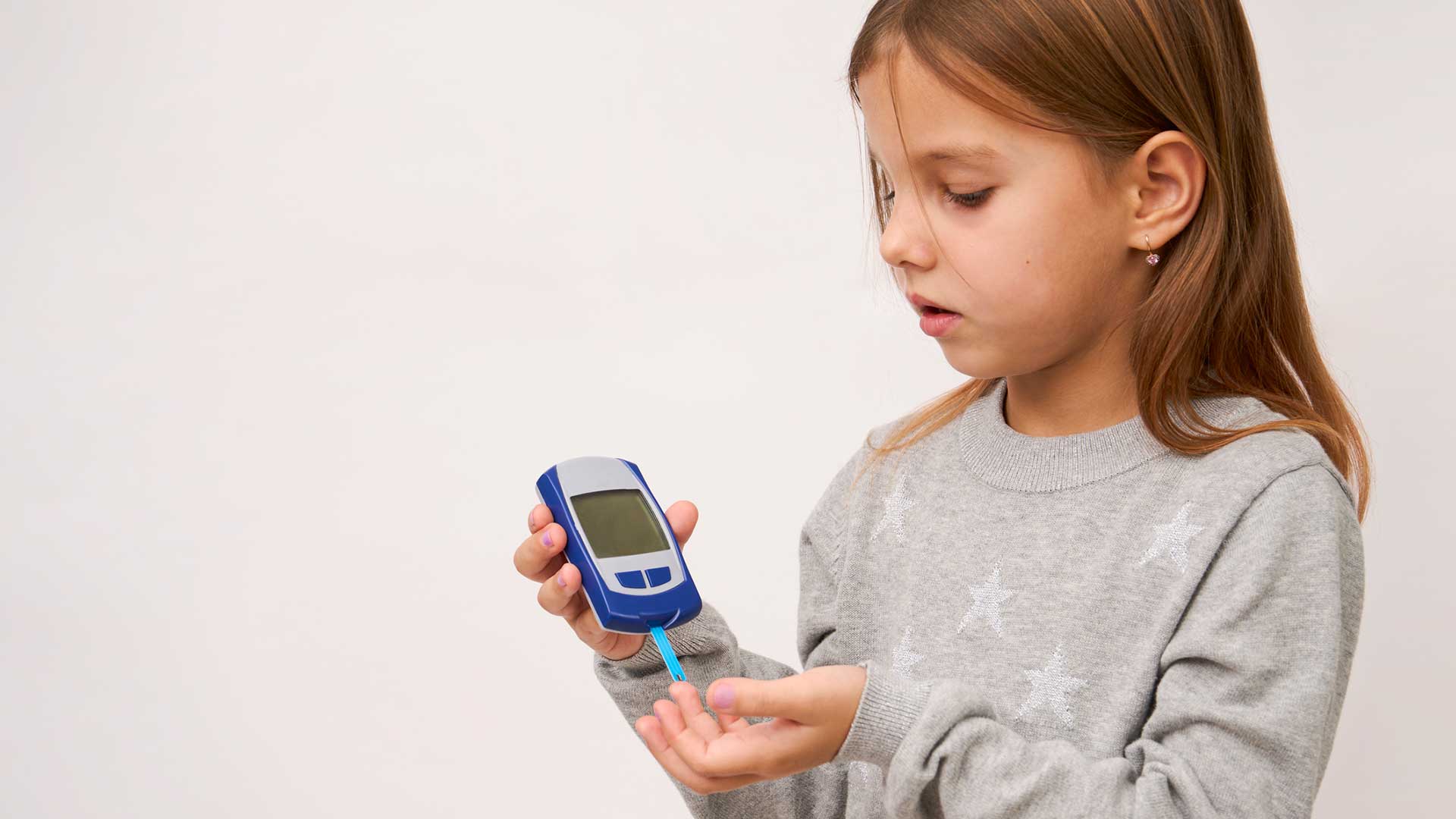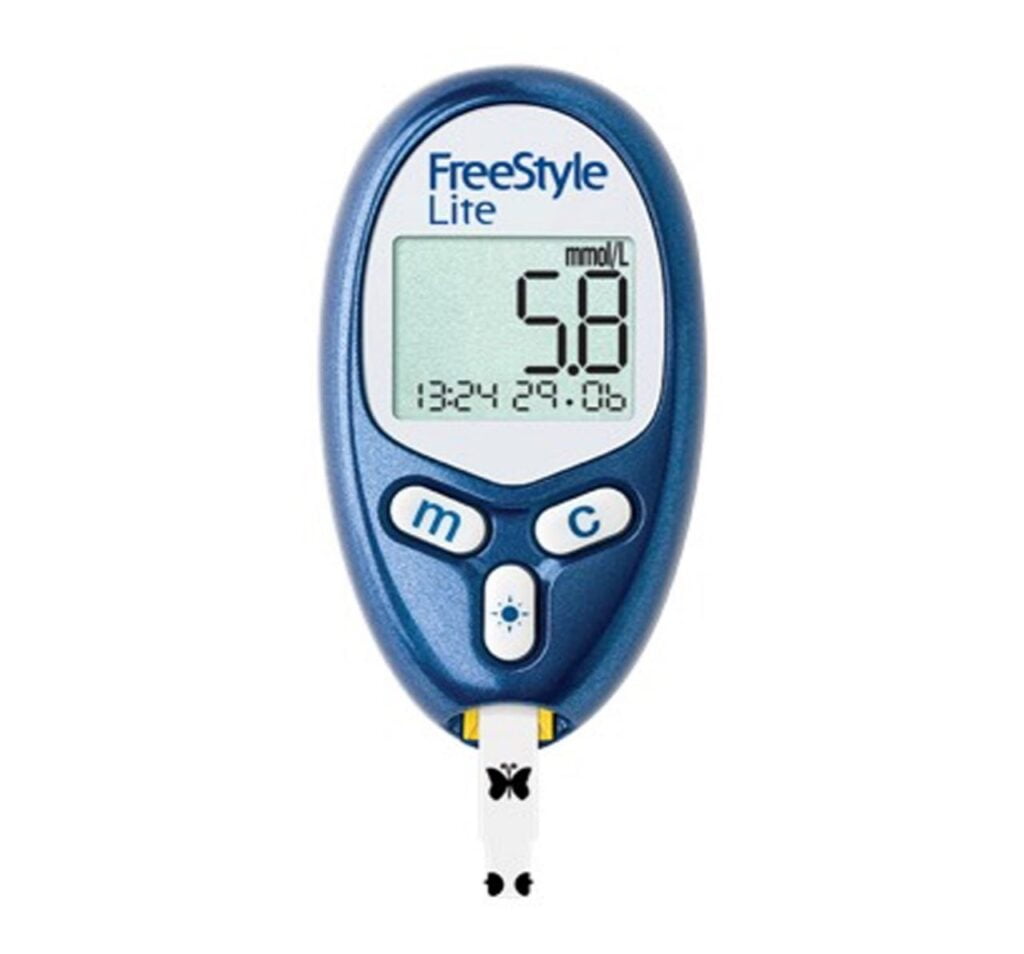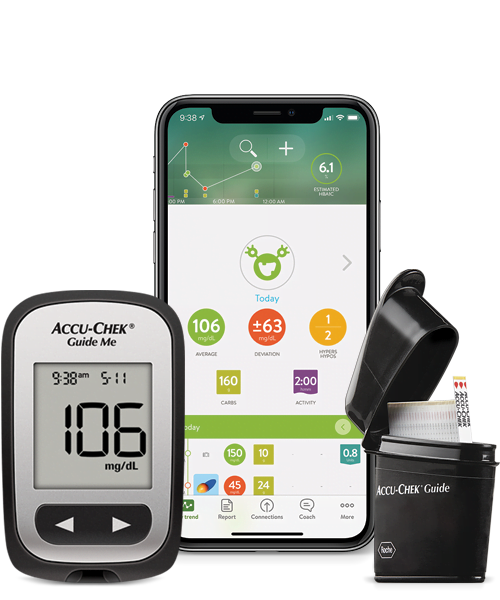Glucometers are a must-have for all homes where someone is diagnosed with diabetes. Accurate testing of blood sugar levels is a very important part of diabetes management.
Glucometers are a very accurate and reliable method of testing blood sugar levels. But there are many options available in the market. Considering just how essential they are, you should make a well-thought-out decision about which one to buy for your child.
So, let’s compare a few of our top picks to give you an idea.
What is a Glucometer?
But first, let’s discuss what exactly a glucometer is.
A glucometer or glucose meter is a small device that gives you a reading of blood sugar levels when a drop of blood is presented to it on a strip that is compatible with it.
The device is pretty small, portable and is battery-powered. It’s accompanied by a lancet (small needle) and a small strip. The needle is used to prick the skin to get a drop of blood that is then placed on the strip. Don’t worry, it only requires a drop of blood and the needle’s prick is not too deep either.
You then connect the strip to the glucometer and you get a pretty accurate reading if it’s correctly calibrated.
How Does a Glucometer Work?
How exactly do glucometers work to get a BGL reading?
One end of the strip has enzymes that react with glucose. So, when someone puts a drop of blood on that end of the strip, the reaction with the enzymes creates an electrical signal which is then interpreted by the glucometer to give a reading of how much sugar is in the blood at that time.
Is a Glucometer Still Needed If Your Child Wears a CGM?
Yes, even if your child wears a CGM, they’ll still need a standard glucometer reading every once in a while.
For starters, most CGMs require you to calibrate them with the help of a standard glucometer at the beginning of use. Although CGMs are quite accurate, they still are noninvasive, and unlike a standard glucometer that directly tests the blood, these test the fluid between cells known as interstitial fluid.
They also mostly use a sensor on the skin, so you do need to do a finger prick test every once in a while to make sure the readings on the CGM are correct. Sensors often have a life of 10-20 days, depending on the device you are using, so it’s best to calibrate the device using a standard glucometer every time you change the sensor on your child’s CGM.
Things to Consider When Choosing a Glucometer For Your Kid
1. Size
The size of a glucometer is a very important thing to consider because you want something light and handy that you can easily keep with you at all times, especially when you leave the house. But, you also don’t want something too small because that means you’ll have a very small screen and a tiny display.
The device itself should be compact but the screen and numbers should be large enough so that you and your child can read them easily.
2. Memory
Different glucometers can store a different number of readings. Certain glucometers can only store a few hundred readings, while certain have larger storage of up to thousands of readings. Large storage is a great feature to have as it allows you to see blood glucose trends throughout the months and allows you to note the number of highs and lows.
However, even if your glucometer doesn’t have a large storage feature, if it’s compatible with apps like Gluroo, the app can then save the readings and provide you with a monthly trend.
3. Accuracy
Some glucometers in the market don’t meet the accuracy requirements set by the Food and Drug Authority (FDA). In that case, you might get unnecessary scares or you might have a false sense of assurance if the readings are inaccurate.
Since your child’s diabetic management depends on these readings, it’s important to make sure that the device you buy is accurate.
4. Ease of Use
As with any device, even with glucometers, you want something easy to use and not too fidgety. Especially if you are buying a glucometer for the first time or you want your child to learn to use it too, it’s best to buy one that’s simple to use without too many parts and ports.
Some glucometers also require you to manually calibrate and code them and that can be a hassle for first-time users, so try to find one that doesn’t require that.
Another important feature is how quickly it shows results, so you want a device that is fast and doesn’t require your child to sit around for ages to get the result.
Most standard glucometers in the market now are pretty easy to use and have very clear directions and user manuals.
Certain glucometers will also have alarms for hypoglycemia and hyperglycemia and even reminders to check blood sugar levels. Features like this are a bonus.
5. Blood Sample Size
This is a very important thing to consider, especially when buying a glucometer for a child. No child, whether young or old, wants to be pricked and see blood.
Considering that this has to be done multiple times a day, a glucometer that only requires a small amount of blood might be the best option. You might want something that requires a small drop of blood and gives accurate readings with that.
6. Test Strips & Lancets
Glucometers come with test strips and lancets or needles that are compatible with them. While the device itself is usually a one-time purchase, it’s the test strips and lancets that you need to keep buying often and usually make up a large bulk of the cost.
This is why you should try to find a device that comes with a large number of strips and lancets that are reasonably priced. Because if they’re not reusable you’ll run out of them pretty quickly.
7. Connectivity
Many diabetes management apps provide wonderful features like charting blood sugar levels and providing you with trends and spreadsheets of your child’s levels in the past few days.
If you have a glucometer that’s compatible with such apps, it can be a very useful feature as you don’t need to enter the values yourself.
Best Glucometers for Kids
1. Contour Next
Contour Next is one of the best glucometers for new and old users for many reasons.
This glucometer is extremely accurate and may even be one of the most accurate options out there. It is accurate to within 8.4% of lab results, which I think is pretty good for an at-home device.
Another great thing about the device is that if you don’t have enough blood on the strip, it will simply alert you and you can then add more blood to the same strip and get a reading. This means that you don’t have to throw away the strip and redo the test and that can save you a lot of money in the long run.
The device also requires no coding and shows messages on the screen in English, Spanish, and 12 other languages so you can use it in your native language.
Another great feature is that the device has an app too so you can directly connect it to the app on your phone via Bluetooth and keep your child’s data saved.
This device manages to check all the boxes we previously mentioned.
2. Freestyle Lite
FreeStyle Lite by Abbott is a tiny glucometer that you can carry around with ease. Abbott is a reputable brand and a big name in the market, so it’s no surprise that the product is good. But what makes it good?
Even though the device requires no coding, it’s extremely accurate and gives blood glucose values very close to lab results based on various studies.
Another great feature of the device is that it has a backlight feature so you can see the results even in the dark. Not only that, but the test strip port also has a light so even if your child is sleeping, you can easily test their levels in a dark room.
To further add to the list of features is the fact that you get results in 5 seconds. And you only need a very small drop of blood.
The company offers a system known as AutoAssist that you can download on your computer and then connect your device to it. It acts as a logbook and gives you old readings and trends.
3. Accu-Chek Guide Me
Accu-Chek is again a huge name in the market and anyone who has ever gone to buy a glucometer has either bought or seen one.
Accu-Chek Guide Me glucometer is a great product to have and let us tell you why.
Again, this is a compact device that you can easily carry around. It even comes with a cover, so you can just throw it in with your stuff and not worry about it.
When it comes to accuracy, this again is pretty accurate and the brand claims that 95% of the results are within 10 mg/dl of lab values.
Again, all you need is a small drop of blood and you will get results in 4 seconds.
One great thing about Accu-Chek devices is that they are compatible with the mySugr app which is a diabetes management app. You can get the pro version of the app for free with an Accu-Chek device. Even without the app, the device has a memory of 720 results.
Overall, the device is handy, easy to use, affordable, and a great option for busy parents and caretakers who don’t have the time to manually log the results from the glucometer.
Now, The Decision is Up to You
These were our three top picks for glucometers for kids with type 1 diabetes based on the features we consider most important to have.
The final decision is, of course, up to you. But we hope this helped you wrap your mind around these devices and gave you the tools you need to select the best option for your family.







